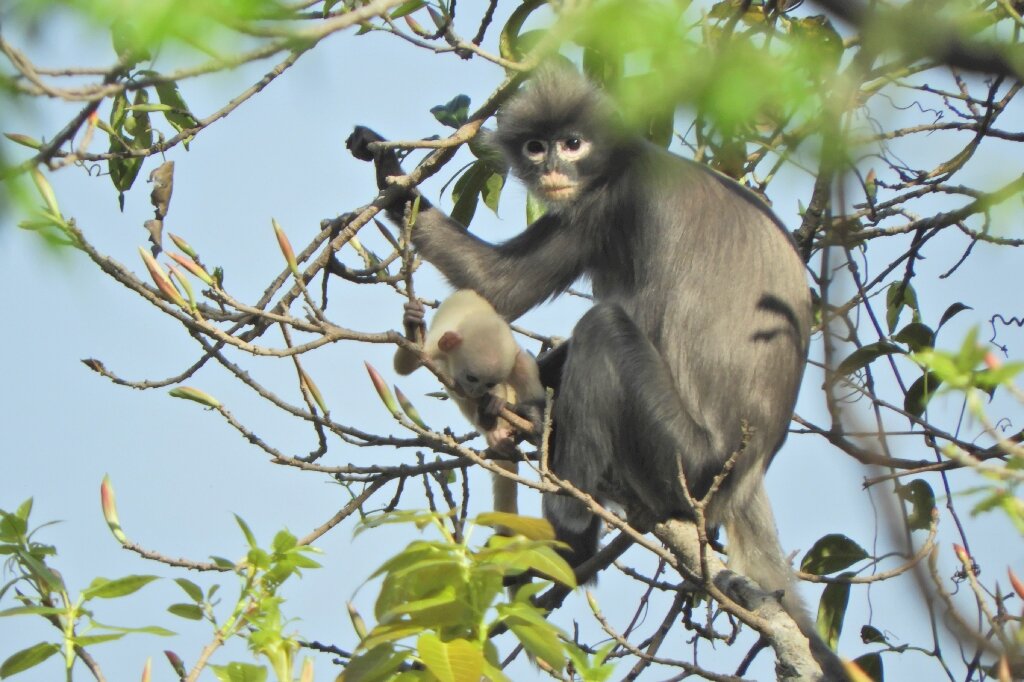A monkey that’s new to science has been found within the distant forests of Myanmar.
The Popa langur, named after it dwells on Mount Popa, is critically endangered with numbers down to about 200 people.
Langurs are a bunch of leaf-eating monkeys that might be discovered throughout southeast Asia.
The newly described animal is thought for its distinctive spectacle-like eye patches and greyish-colored fur.
It’s in danger from habitat loss and looking.
Scientists have long suspected there is likely to be a brand new species in Myanmar, primarily based on DNA extracted from untamed monkeys’ droppings; however, the proof has been onerous to seek out.
About 100 of the monkeys dwell in a protected forest close to Mount Popa.
With little or no info to go on, they turned to historic specimens saved in pure historical past museums in London, Leiden, New York, and Singapore.
Early explorers to Burma collected the monkey specimens, which had by no means been examined intimately.
The researchers extracted DNA and measured bodily options corresponding to tail and ear size, contrasting with these feral populations.
This revealed a brand new species, the Popa langur, which is discovered solely in patches of forest within the center of the nation. Most dwell in a wildlife sanctuary park on the slopes of Mount Popa’s sacred pilgrimage web site.
Describing the species scientifically will assist in its conservation, mentioned Frank Momberg of the conservation group Fauna & Flora Worldwide.
He informed BBC {News}: “The Popa langur, simply newly described, is already critically endangered and going through extinction, so it is completely essential to guard the remaining inhabitants and to have interaction with native communities in addition to personal sector stakeholders to safeguard its future.”
There are solely 200 to 250 animals of the brand new species, which dwell in 4 remoted populations.
Within the final decade or so, Myanmar has opened as much as worldwide collaborations with scientists, which has led to the invention of species new to science, together with reptiles, amphibians. However, the discovery of a brand new primate is uncommon.
Christian Roos of the primate genetics laboratory on the German Primate Centre in Gottingen mentioned the animals confronted threats from habitat loss and looking.
“Searching is a giant downside; however, the greater risk is the habitat is nearly gone, and it’s lowered, fragmented and remoted resulting from human encroachment, ” he mentioned.
The invention is described in the journal Zoological Analysis.
Genetic research revealed that the Popa langur (Trachypithecus popa) separated from different recognized species around a million years in the past.















Leave a Reply